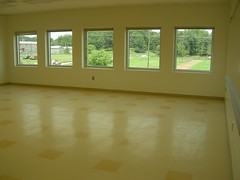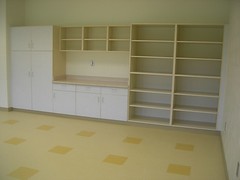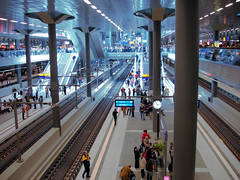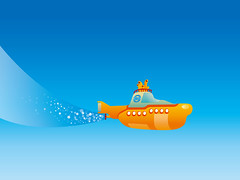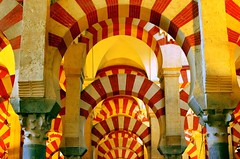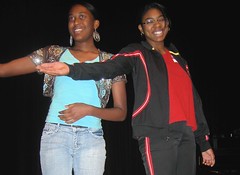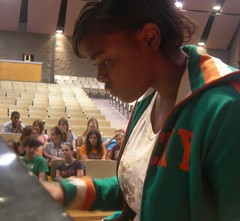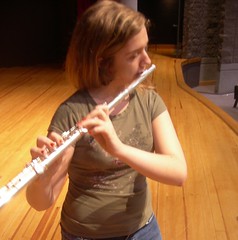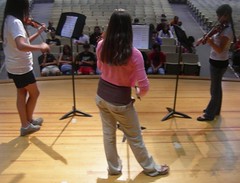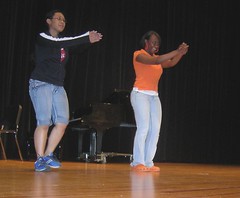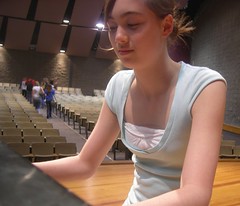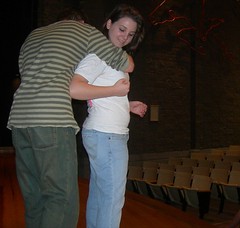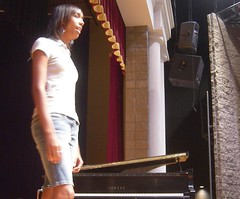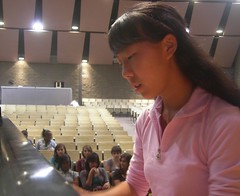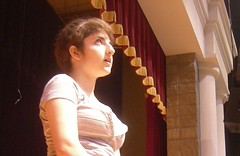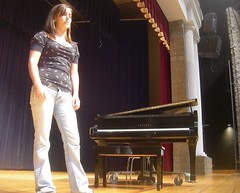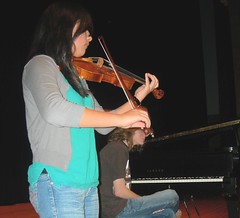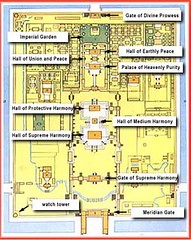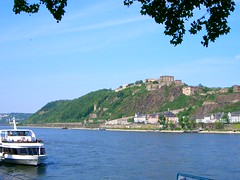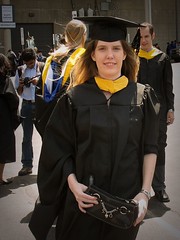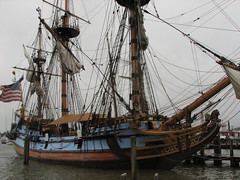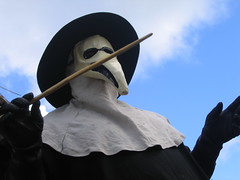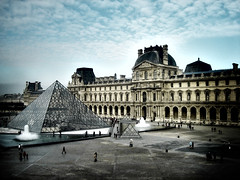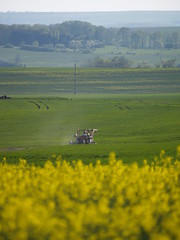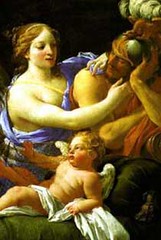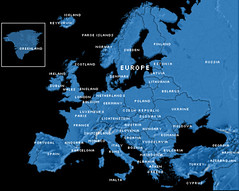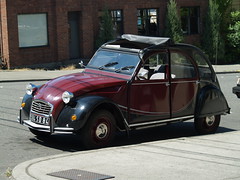Pittsburgh cabbie has a stake in saving La.'s coast
May 21, 2007
Editor's note: This column by author John M. Barry first appeared in the May 12 Washington Post.
There has been much debate in the past 20 months over protecting Louisiana from another lethal hurricane, but nearly all of it has been conducted without any real understanding of the geological context. Congress and the Bush administration need to recognize six facts that define the national interest.
Fact 1: The Gulf of Mexico once reached north to Cape Girardeau, Mo. But the Mississippi River carries such an enormous sediment load that, combined with a falling sea level, it deposited enough sediment to create 35,000 square miles of land from Cape Girardeau to the present mouth of the river.
This river-created land includes the entire coast, complete with barrier islands, stretching from Mississippi to Texas. But four human interventions have interfered with this natural process; three of them that benefit the rest of the country have dramatically increased the hurricane threat to the Gulf Coast.
Fact 2: Acres of riverbank at a time used to collapse into the river system providing a main source of sediment. To prevent this and to protect lives and property, engineers stopped such collapses by paving hundreds of miles of the river with riprap and even concrete, beginning more than 1,000 miles upriver — including on the Ohio, Missouri and other tributaries — from New Orleans. Reservoirs for flood protection also impound sediment. These and other actions deprive the Mississippi of 60 to 70 percent of its natural sediment load, starving the coast.
Fact 3: To stop sandbars from blocking shipping at the mouth of the Mississippi, engineers built jetties extending more than two miles out into the Gulf of Mexico. This engineering makes Tulsa, Kansas City, Minneapolis, Cincinnati, Pittsburgh and other cities into ports with direct access to the ocean, greatly enhancing the nation's economy. The river carries 20 percent of the nation's exports, including 60 percent of its grain exports, and the river at New Orleans is the busiest port in the world. But the jetties prevent any of the sediment remaining in the river from replenishing the Louisiana and Mississippi coasts and barrier islands; instead, the jetties drop the sediment off the continental shelf.
Fact 4: Levees that prevent river flooding in Louisiana and Mississippi interfere with the replenishment of the land locally as well.
Fact 5: Roughly 30 percent of the country's domestic oil and gas production comes from offshore Louisiana, and to service that production the industry created more than 10,000 miles of canals and pipelines through the marsh.
Every inch of those 10,000-plus miles lets saltwater penetrate, and eat away at, the coast. So energy production has enormously accelerated what was a slow degradation, transforming a long-term problem into an immediate crisis. The deprivation of sediment is like moving a block of ice from the freezer to the sink, where it begins to melt; the effect of the canals and pipelines is like attacking that ice with an ice pick, breaking it up.
As a result, 2,100 square miles of coastal land and barrier islands have melted into the Gulf of Mexico. This land once served as a buffer between the ocean and populated areas in Louisiana and part of Mississippi, protecting them during hurricanes. Each land mile over which a hurricane travels absorbs roughly a foot of storm surge.
The nation as a whole gets nearly all the benefits of engineering the river. Louisiana and some of coastal Mississippi get 100 percent of the costs. Eastern New Orleans (including the lower 9th Ward) and St. Bernard Parish — nearly all of which, incidentally, is at or above sea level — exemplify this allocation of costs and benefits. Three man-made shipping canals pass through them, creating almost no jobs there but benefiting commerce throughout the country. Yet nearly all the 175,000 people living there saw their homes flooded not because of any natural vulnerability but because of levee breaks. These levee breaks were along these three man-made shipping canals.
Fact 6: Without action, land loss will continue, and it will increasingly jeopardize populated areas, the port system and energy production. This would be catastrophic for America. Scientists say the problem can be solved, even with rising sea levels, but that we have only a decade to begin addressing it in a serious way or the damage may be irreversible.
Despite all this and President Bush's pledge from New Orleans in September 2005 that "we will do what it takes" to help people rebuild, a draft White House cuts its own recommendation of $2 billion for coastal restoration to $1 billion while calling for an increase in the state's contribution from the usual 35 percent to 50 percent. This turns the idea of the Union on its head. Generating benefits to the nation is what created the problem, and the nation needs to solve it. Put simply: Why should a cab driver in Pittsburgh or Tulsa pay to fix Louisiana's coast? Because he gets a stronger economy and lower energy costs from it, and because his benefits created the problem.
The failure of Congress and the president to act aggressively to repair the coastline at the mouth of the Mississippi River could threaten the economic vitality of the nation. Louisiana, one of the poorest states, can no longer afford to underwrite benefits for the rest of the nation.
John M. Barry is the author of "Rising Tide" and secretary of the Southeast Louisiana Flood Protection Authority East.
Monday, May 21, 2007
Thursday, May 17, 2007
Paper airplanes Do come to mind as you look out the second floor of the new wing at cmhs
Social studies classes will be on the 2nd floor of the new wing next year. English classes on the ground floor. Lots of opportunities for creative signatures in the new rooms.
See me in Rm 205 next year: CMHS has a new wing
Quite a nice room, I must say. An opportunity for me to shed the old and create anew.
Second floor will be nearly all social studies classes. Ground floor nearly all English classes.
Second floor will be nearly all social studies classes. Ground floor nearly all English classes.
Tuesday, May 15, 2007
Der neue Hauptbahnhof / Deutsch review answers . . .
Deutschland review
1) The Rhine River begins: b) Switzerland
2) The Rhine flows north: b) Rotterdam
3) The capital of Bavaria: c) Munchen.
4) T / Comparing the list of notable products from Italy and Germany leads me to conclude they are both leading nations in design and manufacturing.
5) Germany has had little impact on the US culture. An example would be that there are few German cuisine restaurants to be found in America. F
6) The WWII period saw a partnership, called the Axis by Americans, between Germany and another fascist nation: a) Italy
7) Olive oil, balsamic vinegar and espresso: while enjoyed across the globe these items originate with the c) Italians
Write ‘a’ for origin in Italy and ‘b’ for origin in Germany:
8) Audi / b
9) Ferrari / a
10) Mercedes Benz / b
11) Porsche / b
12) BMW / b
13) Smart Car / b
14) Compare the population of Germany to the US: America is approximately __ times bigger in population. a) 3.5
15. Lego toy system: a) Denmark
16. Name the German company that developed acetylsalicylic acid as a household curative: d) Bayer.
17. The swastika was a symbol of the Nazis for about 15 years. But for 3000 years it was a symbol for good fortune in many widespread cultures. Cite the culture with which it was not associated: c) Christian
18. Name the American jazz leader who helped establish the big band era and was a virtuoso on trumpet: d) Louis Armstrong.
19. Gypsies were targeted by the Third Reich for extermination. The best-known Gypsy-born fellow of the era was the guitarist d) Django Reinhardt.
20. Harlem is a neighborhood in the borough of d) Manhattan.
21. The Nazis were effective at building a type of super-patriotism. To convince the youth of the Nazi point of view they used exaggeration and fabrications. This is called a) propaganda
22. The National Socialist German Worker’s Party was not at all a) socialist
23. Nazi Germany began its conquest of Europe with the nation of Poland, 1939./ F
24. Copenhagen is a German city which is on an island in the Baltic Sea. F
When England last had significant cultural impact: Yellow Submarine, 1968
Notes on the influence of the British in the late 1960's, an era tagged the British Invasion period:
* 1950's and early 60's: anti-war and anti-nuclear protest.
* Mid 1960's - Carnaby Street fashions - London - include bell bottom slacks, platform heels, mini skirt, shag. Movies such as Blow Up and Alfie were influential.
* Mid 60's Brit groups: The Rolling Stones, The Yardbirds, The Who, The Kinks, The Pretty Things, Dusty Springfield, The Dave Clark Five, Peter and Gordon, Chad and Jeremy, John Mayall and The Bluesbreakers, and Manfred Mann, the Hollies, Wayne Fontana and the Mindbenders, Freddie and the Dreamers, Davy Jones of The Monkees, and Herman's Hermits; The Animals and The Spencer Davis Group (featuring Steve Winwood) and The Moody Blues.
* 1964 - Beatles become a hit in the US
* 1967 - Beatles global impact with Sgt Pepper's album - poetry, sonic richness, diversity of styles.
* 1968 - movie Yellow Submarine uses Beatles music and images as directed by a Canadian and designed by a German. Helps define the surreal style called psychedelia.
* The late 1960s were a time when NYC was outdone by the cultural force of London. When Chicago was overwhelmed by San Francisco. When Liverpool was the center of attention.
* 1950's and early 60's: anti-war and anti-nuclear protest.
* Mid 1960's - Carnaby Street fashions - London - include bell bottom slacks, platform heels, mini skirt, shag. Movies such as Blow Up and Alfie were influential.
* Mid 60's Brit groups: The Rolling Stones, The Yardbirds, The Who, The Kinks, The Pretty Things, Dusty Springfield, The Dave Clark Five, Peter and Gordon, Chad and Jeremy, John Mayall and The Bluesbreakers, and Manfred Mann, the Hollies, Wayne Fontana and the Mindbenders, Freddie and the Dreamers, Davy Jones of The Monkees, and Herman's Hermits; The Animals and The Spencer Davis Group (featuring Steve Winwood) and The Moody Blues.
* 1964 - Beatles become a hit in the US
* 1967 - Beatles global impact with Sgt Pepper's album - poetry, sonic richness, diversity of styles.
* 1968 - movie Yellow Submarine uses Beatles music and images as directed by a Canadian and designed by a German. Helps define the surreal style called psychedelia.
* The late 1960s were a time when NYC was outdone by the cultural force of London. When Chicago was overwhelmed by San Francisco. When Liverpool was the center of attention.
Sarsens and Bluestones
Last review of the semester:
At pre-historic Stonehenge . . .
1. Placement of Sarsen stones? inner circle
2. Placement of blue stones? outer circle
3. Larger stones? Sarsens; up to 50 tons, 20 ft high.
4. Quarry sites?
Sarsens: 20 miles away on the Salisbury Plain.
Blue stones: 240 miles away in the mountains of Wales.
5. A 3-piece stone construction is called a __? trilithon
6. Shape of the inner group of stones? horse shoe
7. Construction began about the year 3000 BCE.
8. Building and rebuilding continued about 1000 years.
9. "Gigantic rock"? megalith
10. Horizontal beam across a doorway: lintel.
At pre-historic Stonehenge . . .
1. Placement of Sarsen stones? inner circle
2. Placement of blue stones? outer circle
3. Larger stones? Sarsens; up to 50 tons, 20 ft high.
4. Quarry sites?
Sarsens: 20 miles away on the Salisbury Plain.
Blue stones: 240 miles away in the mountains of Wales.
5. A 3-piece stone construction is called a __? trilithon
6. Shape of the inner group of stones? horse shoe
7. Construction began about the year 3000 BCE.
8. Building and rebuilding continued about 1000 years.
9. "Gigantic rock"? megalith
10. Horizontal beam across a doorway: lintel.
Dr. Martin Luther King, Jr. and Mrs. Rosa Parks at a dinner honoring Parks in August of 1965.
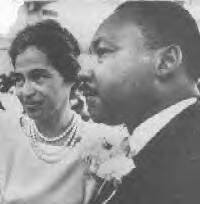
Dr. Martin Luther King, Jr. and Mrs. Rosa Parks at a dinner honoring Parks in August of 1965.
Originally uploaded by Pan-African News Wire File Photos.
1. a) Atlanta
2. b) Boston U.
3. c) Montgomery.
4. c) Montgomery.
5. a) 1955
6. b) Supreme Court decision.
7. b) MK Gandhi
8. a) non-violent protest
9. b) SCLC
10.False
11. b) J Edgar Hoover
12.a) TNT
13. b) JFK
14. b) 1963
15. b) 39
16. b) public transportation
17. a) Civil Rights Act of 1964
18. c) Johnson.
19. a) Selma
20. a) Montgomery
21. b) 1950 - 1953
Stonehenge: awesome mystery in the south of England
Stonehenge is a henge, a Neolithic and Bronze Age megalithic monument located about 8 miles (13 km) north of Salisbury, says Wikipedia. It is composed of earthworks surrounding a circular setting of large standing stones and is one of the most famous prehistoric sites in the world.
Archaeologists think that the standing stones were erected around 3200 BC and the surrounding circular earth bank and ditch, which constitute the earliest phase of the monument, have been dated to about 3100 BC.
The "henge" portion has given its name to a class of monuments known as henges. Archaeologists define henges as earthworks consisting of a circular banked enclosure with an internal ditch.
Archaeological excavation has indicated that around 2600 BC, timber was abandoned in favour of stone and two concentric crescents of holes (called the Q and R Holes) were dug in the centre of the site.
The holes held up to 80 standing stones (shown blue on the plan) 43 of which were derived from the Preseli Hills, 250 km away in modern day Pembrokeshire in Wales. Other standing stones may well have been small sarsens, used later as lintels. The far-travelled stones, which weighed about four tons, consisted mostly of spotted dolerite but included examples of rhyolite, tuff and volcanic and calcareous ash.
What was to become known as the Altar Stone (1), a six-ton specimen of green micaceous sandstone, twice the height of the bluestones, is derived from either South Pembrokeshire or the Brecon Beacons and may have stood as a single large monolith.
The next major phase saw 30 enormous sarsen stones (shown grey on the plan) brought from a quarry around 24 miles (40 km) north to the site on the Marlborough Downs. The stones were dressed and fashioned with mortise and tenon joints before 30 were erected as a 33 m (108 ft) diameter circle of standing stones with a 'lintel' of 30 stones resting on top. The lintels were joined to one another using another woodworking method, the tongue in groove joint.
Each standing stone was around 4.1 m (13.5 feet) high, 2.1 m (7.5 feet) wide and weighed around 25 tons. Each had clearly been worked with the final effect in mind.
Within this circle stood five trilithons of dressed sarsen stone arranged in a horseshoe shape 13.7 m (45 feet) across with its open end facing north east. These huge stones, ten uprights and five lintels, weigh up to 50 tons each and were again linked using complex jointings. They are arranged symmetrically; the smallest pair of trilithons were around 6 m (20 feet) tall, the next pair a little higher and the largest, single trilithon in the south west corner would have been 7.3 m (24 feet) tall. Only one upright from the Great Trilithon still stands; 6.7 m (22 ft) is visible and a further 2.4 m (8 feet) is below ground.
The images of a 'dagger' and 14 'axe-heads' have been recorded carved on one of the sarsens, known as stone 53. Further axe-head carvings have been seen on the outer faces of stones known as numbers 3, 4, and 5. They are difficult to date but are morphologically similar to later Bronze Age weapons; recent laser scanning work on the carvings supports this interpretation.
Even though the last known construction of Stonehenge was about 1600 BC, and the last known usage of Stonehenge was during the Iron Age (if not as late as the 7th century), where Roman coins, prehistoric pottery, an unusual bone point and a skeleton of a young male (780-410 cal BC) were found, we have no idea if Stonehenge was in continuous use or exactly how it was used.
Archaeologists think that the standing stones were erected around 3200 BC and the surrounding circular earth bank and ditch, which constitute the earliest phase of the monument, have been dated to about 3100 BC.
The "henge" portion has given its name to a class of monuments known as henges. Archaeologists define henges as earthworks consisting of a circular banked enclosure with an internal ditch.
Archaeological excavation has indicated that around 2600 BC, timber was abandoned in favour of stone and two concentric crescents of holes (called the Q and R Holes) were dug in the centre of the site.
The holes held up to 80 standing stones (shown blue on the plan) 43 of which were derived from the Preseli Hills, 250 km away in modern day Pembrokeshire in Wales. Other standing stones may well have been small sarsens, used later as lintels. The far-travelled stones, which weighed about four tons, consisted mostly of spotted dolerite but included examples of rhyolite, tuff and volcanic and calcareous ash.
What was to become known as the Altar Stone (1), a six-ton specimen of green micaceous sandstone, twice the height of the bluestones, is derived from either South Pembrokeshire or the Brecon Beacons and may have stood as a single large monolith.
The next major phase saw 30 enormous sarsen stones (shown grey on the plan) brought from a quarry around 24 miles (40 km) north to the site on the Marlborough Downs. The stones were dressed and fashioned with mortise and tenon joints before 30 were erected as a 33 m (108 ft) diameter circle of standing stones with a 'lintel' of 30 stones resting on top. The lintels were joined to one another using another woodworking method, the tongue in groove joint.
Each standing stone was around 4.1 m (13.5 feet) high, 2.1 m (7.5 feet) wide and weighed around 25 tons. Each had clearly been worked with the final effect in mind.
Within this circle stood five trilithons of dressed sarsen stone arranged in a horseshoe shape 13.7 m (45 feet) across with its open end facing north east. These huge stones, ten uprights and five lintels, weigh up to 50 tons each and were again linked using complex jointings. They are arranged symmetrically; the smallest pair of trilithons were around 6 m (20 feet) tall, the next pair a little higher and the largest, single trilithon in the south west corner would have been 7.3 m (24 feet) tall. Only one upright from the Great Trilithon still stands; 6.7 m (22 ft) is visible and a further 2.4 m (8 feet) is below ground.
The images of a 'dagger' and 14 'axe-heads' have been recorded carved on one of the sarsens, known as stone 53. Further axe-head carvings have been seen on the outer faces of stones known as numbers 3, 4, and 5. They are difficult to date but are morphologically similar to later Bronze Age weapons; recent laser scanning work on the carvings supports this interpretation.
Even though the last known construction of Stonehenge was about 1600 BC, and the last known usage of Stonehenge was during the Iron Age (if not as late as the 7th century), where Roman coins, prehistoric pottery, an unusual bone point and a skeleton of a young male (780-410 cal BC) were found, we have no idea if Stonehenge was in continuous use or exactly how it was used.
Friday, May 11, 2007
A golden age in which Muslims, Jews and Christians worked in harmony
During the Islamic Golden Age (fl. 622 CE - 1258 CE in Common Era calendar; or 1 AH - 656 AH in Islamic calendar), scholars and engineers of the Islamic world contributed enormously to philosophy, science, and technology, both by preserving and building upon earlier traditions and by adding their own inventions and innovations. Scientific and intellectual achievements blossomed in the Golden Age, and passed on to Europe to be expanded upon in the European Renaissance.[1]
The Muslims of the Iberian Peninsula (Spain and Portugal) , who ruled between 711 and 1492, are commonly known as the Moors. The territory, which they called "Al Andalus", initially included much of Spain, Portugal and parts of southern France.
The word Moors is a corrupted word referring to the people who came from Morocco (Mauri). Later, other words such as Moriscos and Mudejares were used.
The golden age of al-Andalus: crops produced using irrigation, along with food imported from from the Middle East, provided the area around Córdoba and some other Andalusī cities with an agricultural economic sector by far the most advanced in western Europe.
Among European cities, Córdoba, with a population of perhaps 500,000, was second only to Constantinople in size and prosperity.
Within the Islamic world, Córdoba was one of the leading cultural centres. The work of its most important philosophers and scientists (notably Ibn Rushd ("Averroes") had a major influence on the intellectual life of medieval western Europe.
Muslims and non-Muslims often came from abroad to study in the famous libraries and universities of al-Andalus. This transmission was to have a significant impact on the formation of the European Renaissance.
The Caliphate treated non-Muslims differently at different times. The longest period of tolerance began after 912, wherein the Jews of Al-Andalus prospered, devoting themselves to the service of the Caliphate of Cordoba, to the study of the sciences, and to commerce and industry, especially to trading in silk and slaves, in this way promoting the prosperity of the country. Southern Iberia became an asylum for the oppressed Jews of other countries.
Notes:
711 AD: Muslim invaders crossed the Strait of Gibraltar to conquer most of Spain.
Great cities of Andalusia, or southern Spain, were Sevilla, Granada and Cordoba.
Arabs controlled much of Spain from about 700 AD to almost 1500 AD.
* architecture (Alhambra Palace)
* science (astronomy, medicine)
* music and dance (guitarra, flamenco dance)
* Literature, esp. poetry.
The Crusades, app 1100 to 1300 AD, saw the French and English armies going to Jerusalem to fight Muslims over control of the Holy Land.
The Spanish Inquisition:
The word inquisition (from the Latin: inquisitio) is the act of inquiring. It was broadly used in law, before the Medieval Inquisition, to refer to a common law procedure of inquiring into a matter, investigating, usually through interrogation, and by use of force. Over time, it was gradually associated with judging heresy against Christianity.
The reconquest of Spain from the Moors resulted in a relatively peaceful multi-religious society, but violent anti-Judaism ensued and Jews converted en masse to the Catholic faith. Some of these conversos were suspected of not being sincere converts and the Alhambra Decree in 1492 ordered all Jews to leave their kingdoms, making about 40,000 Jews leave.
Sixtus IV later accused the Spanish inquisition of being overzealous, accused the monarchs for being greedy and issued a commend to stop it, but he was pressured into withdrawing the restriction.
During the 16th century the main target became Protestants. In time converts from Islam and Moriscos were also persecuted by the Spanish Inquisition. Other crimes were also taken up in these tribunals such as Superstitions, heretical propositions, Sodomy, Bigamy and solicitation.
The Spanish Inquisition was an institution at the service of the monarchy.
The Muslims of the Iberian Peninsula (Spain and Portugal) , who ruled between 711 and 1492, are commonly known as the Moors. The territory, which they called "Al Andalus", initially included much of Spain, Portugal and parts of southern France.
The word Moors is a corrupted word referring to the people who came from Morocco (Mauri). Later, other words such as Moriscos and Mudejares were used.
The golden age of al-Andalus: crops produced using irrigation, along with food imported from from the Middle East, provided the area around Córdoba and some other Andalusī cities with an agricultural economic sector by far the most advanced in western Europe.
Among European cities, Córdoba, with a population of perhaps 500,000, was second only to Constantinople in size and prosperity.
Within the Islamic world, Córdoba was one of the leading cultural centres. The work of its most important philosophers and scientists (notably Ibn Rushd ("Averroes") had a major influence on the intellectual life of medieval western Europe.
Muslims and non-Muslims often came from abroad to study in the famous libraries and universities of al-Andalus. This transmission was to have a significant impact on the formation of the European Renaissance.
The Caliphate treated non-Muslims differently at different times. The longest period of tolerance began after 912, wherein the Jews of Al-Andalus prospered, devoting themselves to the service of the Caliphate of Cordoba, to the study of the sciences, and to commerce and industry, especially to trading in silk and slaves, in this way promoting the prosperity of the country. Southern Iberia became an asylum for the oppressed Jews of other countries.
Notes:
711 AD: Muslim invaders crossed the Strait of Gibraltar to conquer most of Spain.
Great cities of Andalusia, or southern Spain, were Sevilla, Granada and Cordoba.
Arabs controlled much of Spain from about 700 AD to almost 1500 AD.
* architecture (Alhambra Palace)
* science (astronomy, medicine)
* music and dance (guitarra, flamenco dance)
* Literature, esp. poetry.
The Crusades, app 1100 to 1300 AD, saw the French and English armies going to Jerusalem to fight Muslims over control of the Holy Land.
The Spanish Inquisition:
The word inquisition (from the Latin: inquisitio) is the act of inquiring. It was broadly used in law, before the Medieval Inquisition, to refer to a common law procedure of inquiring into a matter, investigating, usually through interrogation, and by use of force. Over time, it was gradually associated with judging heresy against Christianity.
The reconquest of Spain from the Moors resulted in a relatively peaceful multi-religious society, but violent anti-Judaism ensued and Jews converted en masse to the Catholic faith. Some of these conversos were suspected of not being sincere converts and the Alhambra Decree in 1492 ordered all Jews to leave their kingdoms, making about 40,000 Jews leave.
Sixtus IV later accused the Spanish inquisition of being overzealous, accused the monarchs for being greedy and issued a commend to stop it, but he was pressured into withdrawing the restriction.
During the 16th century the main target became Protestants. In time converts from Islam and Moriscos were also persecuted by the Spanish Inquisition. Other crimes were also taken up in these tribunals such as Superstitions, heretical propositions, Sodomy, Bigamy and solicitation.
The Spanish Inquisition was an institution at the service of the monarchy.
Wednesday, May 09, 2007
Versailles, French kings and the French revolution
The Palace of Versailles, the Bourbon Kings and the French Revolution
1. Versailles is northwest of the city of Paris. T / F
2. The building of Versailles dates from about: a) 1500 b) 1600 c) 1700 d) 1800.
3. The gardens of Versailles are accented by some 1,400
a) trees b) fountains c) orangutans d) types of birds.
4. Louis worked on Versailles with some 36,000 laborers and scores of designers. He would work on the project about a) 20 b) 50 c) 75 d) 100 years before the palace was completed.
5. Between the King’s apartment and the queen’s was a fabulous hallway, known as the Hall of a) Mirrors b) Marble c) Candles d) Portraits.
6. Louis XIV spent a ruinous amount of the national budget on a) wine b) clothing c) travel d) war.
7. Louis built his social life around a) ballet b) art c) horse racing d) politics.
8. Though Louis XIV had numerous mistresses as well as a wife, he was not heterosexual. T / F
9. The Louvre and the Palais Royale were a) leaders of the revolution b) dance steps c) royal residences
d) fortresses.
10. Louis moved the capitol from Paris to Versailles because of the __ in Paris. a) impoverished mob
b) political enemies c) noise and smell d) lack of plumbing.
11. Louis was succeeded by his great-grandson, not his son, because his reign lasted some __ years. a) 22 b) 42 c) 72 d) 102.
12. The French Revolution upturned the aristocrats’ lives in a) 1776 b) 1789.
13. The revolution burst forth during the reign of a) Louis XIV b) Louis XV c) Louis XVI d) Louis XVII.
14. The first place attacked by the rebellious mob of the revolutionary wave was a prison in Paris called the
a) Trianon b) Bastille c) L’Orangerie d) Louvre.
15. The guillotine was used in the execution of nobles and priests and other powerful personages. Some __ were sent to their death. a) 40,000 b) 400,000 c) 4 million.
16. Executed because she was the French queen at the wrong time and wrong place was the Austrian-born
a) Madame de Pompadour b) Madame de Maintenon
c) Marie Curie d) Marie Antoinette.
1. Versailles is northwest of the city of Paris. T / F
2. The building of Versailles dates from about: a) 1500 b) 1600 c) 1700 d) 1800.
3. The gardens of Versailles are accented by some 1,400
a) trees b) fountains c) orangutans d) types of birds.
4. Louis worked on Versailles with some 36,000 laborers and scores of designers. He would work on the project about a) 20 b) 50 c) 75 d) 100 years before the palace was completed.
5. Between the King’s apartment and the queen’s was a fabulous hallway, known as the Hall of a) Mirrors b) Marble c) Candles d) Portraits.
6. Louis XIV spent a ruinous amount of the national budget on a) wine b) clothing c) travel d) war.
7. Louis built his social life around a) ballet b) art c) horse racing d) politics.
8. Though Louis XIV had numerous mistresses as well as a wife, he was not heterosexual. T / F
9. The Louvre and the Palais Royale were a) leaders of the revolution b) dance steps c) royal residences
d) fortresses.
10. Louis moved the capitol from Paris to Versailles because of the __ in Paris. a) impoverished mob
b) political enemies c) noise and smell d) lack of plumbing.
11. Louis was succeeded by his great-grandson, not his son, because his reign lasted some __ years. a) 22 b) 42 c) 72 d) 102.
12. The French Revolution upturned the aristocrats’ lives in a) 1776 b) 1789.
13. The revolution burst forth during the reign of a) Louis XIV b) Louis XV c) Louis XVI d) Louis XVII.
14. The first place attacked by the rebellious mob of the revolutionary wave was a prison in Paris called the
a) Trianon b) Bastille c) L’Orangerie d) Louvre.
15. The guillotine was used in the execution of nobles and priests and other powerful personages. Some __ were sent to their death. a) 40,000 b) 400,000 c) 4 million.
16. Executed because she was the French queen at the wrong time and wrong place was the Austrian-born
a) Madame de Pompadour b) Madame de Maintenon
c) Marie Curie d) Marie Antoinette.
In France, crawfish are called écrevisses (a - cray - veece)
Crayfish, often referred to as crawfish or crawdad, are freshwater crustaceans resembling small lobsters, to which they are closely related, says Wikipedia.
They are found in bodies of fresh water that do not freeze to the bottom; they are also mostly found in brooks and streams where there is fresh water running, and which have shelter against predators.Some crayfish have been found living as much as 3 m (10 feet) underground.
Crayfish are eaten in Europe (especially France and Sweden), China, Australia and the United States. 98% of the crayfish harvested in the United States come from Louisiana.
Crayfish in Louisiana are usually boiled live in a large pot with heavy seasoning (salt, cayenne pepper, lemon, garlic, bay leaves, etc.) and other items such as potatoes, corn, onions, garlic, and sausage. They are generally served at a gathering known as a crawfish boil.
Crayfish is a popular dish in Scandinavia, and is by tradition primarily consumed during the fishing season in August. The boil is typically flavored with salt, sugar, ale, and large quantities of the flowers of the dill plant. China and the United States are today the biggest sources of import.
Like other edible crustaceans, only 35% of the body weight of a crayfish is edible.
They are found in bodies of fresh water that do not freeze to the bottom; they are also mostly found in brooks and streams where there is fresh water running, and which have shelter against predators.Some crayfish have been found living as much as 3 m (10 feet) underground.
Crayfish are eaten in Europe (especially France and Sweden), China, Australia and the United States. 98% of the crayfish harvested in the United States come from Louisiana.
Crayfish in Louisiana are usually boiled live in a large pot with heavy seasoning (salt, cayenne pepper, lemon, garlic, bay leaves, etc.) and other items such as potatoes, corn, onions, garlic, and sausage. They are generally served at a gathering known as a crawfish boil.
Crayfish is a popular dish in Scandinavia, and is by tradition primarily consumed during the fishing season in August. The boil is typically flavored with salt, sugar, ale, and large quantities of the flowers of the dill plant. China and the United States are today the biggest sources of import.
Like other edible crustaceans, only 35% of the body weight of a crayfish is edible.
Château de Versailles - Grand Canal and Fountain of Latona
In the late 1600's one of the world's most splendiferous edifices, the Palace of Versailles, was built by Louis the XIV.
Louis felt too close to the poverty and danger of the mobs of Paris when he was at the Palais Royale or Palace du Louvre. So he moved his capital to the countryside.
Extravagant and insensitive, he demanded that the nobles of France leave their chateaus and reside in Versailles. It eventually comprised ...
- 1000 nobles in residence..
- 5000 servants.
- 9000 soldiers.
Louis XIV took the name Le Roi Soleil, the Sun King, after he played that role in a ballet given at the palace. His emphasis on ballet was enormous. He also loved the hunt.
His expenditures on luxuries and his wars almost bankrupted the nation.
Louis XV was also extravagant. Sadly, he was a weak ruler.
In the time of Louis XVI the revolution of poor people came to pass. The monarchy was deposed. Louis and queen Marie Antoinette were sent to the guillotine. Some 40,000 people would be executed during the French Revolution and the Reign of Terror.
The French Revolution lasted some 10 years - 1789 - 1799. The era was ended by the appearance of Napoleon.
The Bastille Prison, used for arbitrary and political prisoners, was symbolic of the hated aristocracy. The rebels attacked it as the first act of the revolution. The date of the attack was July 14, 1789, and is celebrated as independence day for France.
Versailles:
- L'Orangerie - 2000 orange trees
- 1,400 fountains
- 36,000 workers.
Louis felt too close to the poverty and danger of the mobs of Paris when he was at the Palais Royale or Palace du Louvre. So he moved his capital to the countryside.
Extravagant and insensitive, he demanded that the nobles of France leave their chateaus and reside in Versailles. It eventually comprised ...
- 1000 nobles in residence..
- 5000 servants.
- 9000 soldiers.
Louis XIV took the name Le Roi Soleil, the Sun King, after he played that role in a ballet given at the palace. His emphasis on ballet was enormous. He also loved the hunt.
His expenditures on luxuries and his wars almost bankrupted the nation.
Louis XV was also extravagant. Sadly, he was a weak ruler.
In the time of Louis XVI the revolution of poor people came to pass. The monarchy was deposed. Louis and queen Marie Antoinette were sent to the guillotine. Some 40,000 people would be executed during the French Revolution and the Reign of Terror.
The French Revolution lasted some 10 years - 1789 - 1799. The era was ended by the appearance of Napoleon.
The Bastille Prison, used for arbitrary and political prisoners, was symbolic of the hated aristocracy. The rebels attacked it as the first act of the revolution. The date of the attack was July 14, 1789, and is celebrated as independence day for France.
Versailles:
- L'Orangerie - 2000 orange trees
- 1,400 fountains
- 36,000 workers.
Tuesday, May 08, 2007
More on the Semester Exam study guide . . .
Semester exam study guide:
atlas skills
I will expect all students to use their atlas. If the Rand McNally Quick Reference World Atlas has been lost, a replacement costs only $6 and will provide great value for the family as well as the geo student.
Students will use latitude, longitude, physical and political info and atlas-based inquiry skills in these questions.
Questions will be based on locations studied this semester. An example . . .
L’Italia -
1. Milano (symbol: Milano cookie)
2. Venezia (the gondola called a vaporetto)
3. Firenze (Florence): the Ponte Vecchio or a guitar w a Florentine cutaway.
4. Roma: the Roman Forum, the place where men argued the issues.
5. Vatican City: il Pape and the Sistine Chapel.
6. Napoli (Naples): the home of pizza and the Isla Capri.
7. Sicily: home of the Cosa Nostra.
8. Sardinia: the sardine.
9. Tunisia: Carthaginian general Hannibal atop an elephant.
10. Med: the storage container called an amphora.
See more semester exam guide material in nearby posts.
atlas skills
I will expect all students to use their atlas. If the Rand McNally Quick Reference World Atlas has been lost, a replacement costs only $6 and will provide great value for the family as well as the geo student.
Students will use latitude, longitude, physical and political info and atlas-based inquiry skills in these questions.
Questions will be based on locations studied this semester. An example . . .
L’Italia -
1. Milano (symbol: Milano cookie)
2. Venezia (the gondola called a vaporetto)
3. Firenze (Florence): the Ponte Vecchio or a guitar w a Florentine cutaway.
4. Roma: the Roman Forum, the place where men argued the issues.
5. Vatican City: il Pape and the Sistine Chapel.
6. Napoli (Naples): the home of pizza and the Isla Capri.
7. Sicily: home of the Cosa Nostra.
8. Sardinia: the sardine.
9. Tunisia: Carthaginian general Hannibal atop an elephant.
10. Med: the storage container called an amphora.
See more semester exam guide material in nearby posts.
Exam notes: essay topics, part 1 of the study guide
Semester Study Guide / World geography / Trudeau
Essay for bonus pts (up to 10 pts). Choose one topic and find the needed notes in preparation for the in-exam composition. Follow guidelines below:
* Peter Dut, the fellow who went to Kansas City and US high school, vs Santino Chor, the guy who stayed in Houston, in Lost Boys of Sudan.
* USA vs Deutschland
* Thomas Berger, the guy who goes Nazi, vs Peter Muller, the fellow who lost his father to the Nazis, in Swing Kids.
*******************
The rubric (required elements) that will guide essay writing in geo class includes:
1. Colorful opening. There are 3 recommended ways to create an interest-getting opening: a) use a quote b) ask a question c) write with vivid description.
2. Blend the topics continually in the paper. Do not write a block of material about one topic and then write a separate block about the other topic. Integrate the topics as you offer insight and evidence.
3) Use comparison terms:
* different from,
* the same,
* Both,
* similar to,
* Neither, ... nor,
* like X is (adjective),
* ... than X is (adverb) than.
* both, ...
* either...or
* likewise
* similarly
* although,
* but neither...
* nor
* however
* on the other hand
4. Specific examples must be used to support generalities. An example: generality - The Incredibles was an awesome movie. specific - The Incredibles appealed to me because the characters (especially the mom and the teen sister) were believeable. They sounded like people I know.
5. Grammar counts.
6. Spelling, too. When in doubt, see a dictionary or ask me.
7. Punctuation is paramount. Again, ask me or your Grammar Check software.
8. Include documentation via "according to ...". This means include your source - from World Book to your little brother - in the body of your writing. Usually you place it at the end of the first or second sentence, says Grammar For Today.
9. Write a snappy title. Ways to make a title fun are to tweak a song or movie title or use alliteration. Also, write an explanatory subtitle. Example: "Dinkas are Incredibles;" "Many refugees from the Sudanese Dinka tribe have moved from poverty in east Africa to comfort in the US."
10. Finally, please don't put quotation marks around your title - unless you are quoting someone.
Notes . . .
1. demograhic info: populations
2. bureaucracy: government by layers of authority
3. evaluate: to measure the effectiveness of something
4. Dinka: African tribe
5. Nilotic: along the Nile
6. United Nations: world mediation association
7. refugee / asylum: person seeking safe haven
8. Peter Dut: refugee who goes to Kansas and graduates from a US high school.
9. Santino Chuor: refugee who works in Houston.
10. Sudan: civil war.
11. INS: Immigration and Naturalization Service: controls who gets to stay in the US.
12. ululation: high-pitched African cheering-type sound.
13. fu fu: food made by pounding a paste from roots.
14. Eastern Africa: Swahili country.
15. Swahili: language that unites people of East Africa.
16. Acacia tree: typical tree of Sudan in Africa.
17. English / British colony: Kenya, Tanzania, South Africa, Nigeria.
Arabic / Muslims: ancient colonizers of East Af.
18. mnemonic: memory aid.
19. Nairobi, Kenya: capital.
20. documentation : your source, or proof of your info.
21. indigenous: native peoples or things.
22. Houston: 4.5 M, Kansas City: 2 M
23. African gold mines: across the continent, but especially in S Af.
24. diamond mines / DeBeers Co.
25. Ashanti tribe: associated with Ghana.
26. Youssou n ’Dour: Senegalese singer.
27. Atlantic slave trade Europeans: 1500’s - 1800’s.
28.Atlantic slave trade Africans: enslavement of neighbors.
29.King Mansa Musa: Mali.
30. King Ibn Battuta: Morocco.
31. Ethiopian Christianity: East Africa.
32. Timbuktu / Toumbouctou: fabled city of gold on Sahara.
1) GDP & GCI is higher in a) Mexico b) Brasil.
2) The population is greatest in a) Rio de Janeiro b) Mexico City
c) Sao Paulo.
3. The Yucatan is surrounded by the Atlantic, Gulf of Mexico, Pacific and Caribbean. T / F
1. Swahili / Lion King
2. Gates Foundation activities in Africa: AIDS in Africa.
3. Mt Kilimanjaro in Tanzania on the border with Kenya.
4. rift valley of East Africa; Origin of man in Africa.
1. Enormous influence on US culture: music (jazz, blues, r & b, gospel, rap), dance (jazz), cuisine (gumbo, fried chicken), vocabulary ( rock n’ roll, jazz, etc), though population is relatively small (about 12% US).
2. Bill & Melinda Gates Foundation: giving billions to disease control & eradication in Africa (AIDS, malaria, etc).
3. Coltan, diamonds & oil: resources needed in the present and future (coltan used in mini-batteries, such as in cell phones).
On the map of the continent of Africa (RMQRWA, p. 40):
1. Atlantic
2. Morocco (“How do you see all there is to see in Morocco?” “See it twice.”)
3. Senegal (guitar & dancer)
4. Liberia (African-Americans)
5. Nigeria (oil derrick)
6. South Africa (diamonds, gold)
7. Kenya (“Lion King,” Disney’s Animal Kingdom)
8. Sudan (guns crossed: civil war)
9. Somalia (Al qaeda terrorists)
10. Ethiopia (Christian cross)
11. Egypt (mask of Tutankhamun)
12. Mediterranean
13. Red Sea
14. Indian Ocean
15. Sahara (Arabic: “desert”)
geo review 05.07.07
1. Geologists believe the history of the earth spans some ___ years.
2. Nickel and iron soup: components of the earth’s __.
3. A thick pudding of iron and nickel: the __ __.
4. If you drape a beautifully decorated cloth over the shoulders of a priest, it is called a mantle. Explain how the earth’s geologic term, “mantle,” parallels this meaning. (one sentence)
5. The earth’s crust is made of flour, water, salt and rock. T / F
6. The crust varies in flavor. The seaweed crust is some __ miles thick. The baked crust is often about __ miles thick.
7. Why do you and I not agree with the text in regards the surface of the planet? We believe the earth is covered with trees, not seawater. Why do we believe this (go with me on this one, ok?) to be true? (one sentence)
8. Meantime, according to your text, what percentage of earth is not covered with water?
9. The largest continental mass?
10. How do you spell the “difference in elevation” on the land’s surface?
11. It’s called magma sometimes and lava at other times. What is it and why the dif?
12. Would you rather live near a fault or a fold in the earth’s crust?
Explain a fold.
13. The earth’s crust and the upper layer of mantle makes up the ___. “Lith” refers to rock and “sphere” refers to the ______.
14. Do the earth’s plates move Toward each other or Apart from each other?
15. Write down the etymology of the term Pangaea.
16. Would you call the 180 million years since continental drift began an extremely ancient earth phenomenon or relatively recent one? Explain by giving one additional measurement.
17. Explain the use of fossil evidence in the continental drift theory.
(one sentence)
18. A split in the earth’s crust is called a __.
19. Scientists believe in the theory of seafloor spreading. T / F
20. How do the earth’s crustal plates get the power to move?
21. If thermal energy is involved, what’s the source of the tectonic heat?
22. Sketch the platal dance that occurs when continental crust meets the oceanic crust.
23. In the case of the Andes Mtns., what’s ironic about subduction?
24. When continental plates collide, what is the result?
25. Which plates created the Himalayas?
Locations that are part of the Pacific Ring of Fire region, Y (yes) or N (no):
26. Philippines
27. Hawaii
28. Mexico
29. Chile
30. Bering Strait
31. Mt Vesuvius
32. Tasmania
33. Alaska
34. Indonesia
35. China
36. Ecuador
37. The Nazca Plate and the South American plate: a) subduction b) spreading
38. The San Andreas zone: a) converging b) faulting.
39. “Hot spots” in the mantle are associated with a) archipelagos
b) geysers c) mitosis.
Answers:
1. Earth span: 4.6 billion years. Did you wonder how this estimate was generated?
2. Nickel & iron soup: outer core. What’s the composition of nickel?
Why nickel & iron?
3. Nickel & iron pudding: inner core.
4. The mantle is a robe draped over the core.
5. True. Why not?
6. seaweed: 5 miles “down.” baked crust: 20 miles deep. Surprised?
7. Local observation: when we observe local terrain it is tree rich. No seawater round here, yet.
8. About 30% not watery.
9. Eurasia is largest. It’s bigger than Texas.
10. r-e-l-i-e-f: the description of the upper and lower parts of the terrain.
11. Magma, lava: molten rock inside or outside the crust.
12. Neither. A fold is when a stratum of rock is bent or curved by huge force. The Appalachians are folds. There are upfolds (assoc w petroleum & coal deposits), or domes, and downfolds, or depressions.
13. lithosphere: crust & mantle. globe.
14. Both.
15. pan, “across” or “all,” and gaia, “earth.”
16. Recent compared to 4.6 billiob years of history.
17. Fossils are the same in separated plates, proving a historic closeness.
18. split: rift.
19. True, re seafloor spreading. Proven by photos taken by remote-controlled submarines.
20. Thermal energy or convection.
21. Thermal: decaying organic matter.
22. Subduction: coastal crust folds under the continental.
23. Subduction assoc with the opposite: mountain formation.
24. Plates collide: converging or faulting. Violence.
25. Indo-Australian plate vs. the Eurasian plate: Himalayas.
26. Philippines: Y
27. Hawaii: Y
28. Mexico: Y
29. Chile: Y
30. Bering Strait: Y
31. Vesuvius: N
32. Tasmania: N
33. Alaska: Y
34. Indonesia: Y
35. China: Y
36. Ecuador: Y
37. Nazca plate & S. Am. plate: subduction
38. San Andreas: faulting
39. Hot spots: a) archipelagos b) geysers and c) mitosis.
40. Most critical hydrologic issue of the ArkLaTex? hydrology, or water supply
1. MLK birthplace: a) Atlanta b) Memphis c) Charleston
2. PhD was awarded after study at a) Harvard b) Boston U. c) Johns Hopkins U.
3. First pastorate: a) Selma b) Jacksonville c) Montgomery.
4. First leadership of a boycott: a) Selma b) Jacksonville c) Montgomery.
5. Rosa Parks bus incident: a) 1955 b) 1958 c) 1961.
6. Outcome of year-long Alabama bus boycott was a ruling against discriminatory practices in public transportation: a) legislation by Congress b) Supreme Court decision.
7. King’s plan of non-violence was derived from the teachings and practice of a) TE Lawrence b) MK Gandhi c) Abraham Lincoln.
8. King also adopted Gandhi’s style of quiet and civilized rebellion. It was called a) non-violent protest b) civil disobedience c) passive resistance.
9. King was head of the a) SNCC b) SCLC c) NAACP.
10. The FBI was able to quietly help protect MLK and give him aid when needed. T / F
11. Head of the FBI for some 49 years: a) Robert kennedy
b) J Edgar Hoover c) Joseph McCarthy d) Henry Truman.
12. Alfred Nobel won fame and fortune with the a) TNT b) LSD c) LCD d) ICBM.
13. Name the president who did not side with King until the March on Washington showed that MLK could draw together 250,000 people of all backgrounds. a) LBJ
b) JFK c) Richard Nixon.
14. The “I have a Dream” speech was delivered in a) 1960 b) 1963 c) 1965.
15. King was murdered at age a) 36 b) 39 c) 41.
16. The Supreme Court decision most important to King’s work was one that ruled against one type of segregation:
a) jobs b) public transportation c) schools d) housing.
17. Unfair discrimination in housing and jobs was prohibited by the a) Civil Rights Act of 1964 b) Voting Rights Act of 1965.
18. Congressional bills against racist practice in 1964 and 1965 were pushed by President a) Kennedy b) Nixon
c) Johnson.
Monday, May 07, 2007
Deutschland: the general Germany quiz . . .
Deutschland review / Geography quiz / Trudeau
1) The Rhine River begins its course through Western Europe in the nation of a) France b) Switzerland c) Germany d) Italy.
2) The Rhine flows north toward the North Sea. Its mouth is at the city of a) Amsterdam b) Rotterdam c) Antwerp d) Hamburg.
3) The capital of Bavaria must be the city of a) Frankfurt b) Berlin c) Munchen.
4) T / F Comparing the list of notable products from Italy and Germany leads me to conclude they are both leading nations in design and manufacturing.
5) Germany has had little impact on the US culture. An example would be that there are few German cuisine restaurants to be found in America. T / F
6) The WWII period saw a partnership, called the Axis by Americans, between Germany and another fascist nation: a) Italy b) France c) Austria d) Poland.
7) Olive oil, balsamic vinegar and espresso: while enjoyed across the globe these items originate with the a) French b) Germans c) Italians
d) English.
Write ‘a’ for origin in Italy and ‘b’ for origin in Germany:
8) Audi 9) Ferrari 10) Mercedes Benz
11) Porsche 12) BMW 13) Smart Car
14) Compare the population of Germany to the US: America is approximately __ times bigger in population. a) 3.5 b) 6.5 c) 10.5
15. One of Germany’s neighbors is the home of the Lego toy system:
a) Denmark b) Poland c) Austria d) Switzerland.
16. Name the German company that developed acetylsalicylic acid as a household curative: a) BASF b) Birkenstock c) Leica d) Bayer.
17. The swastika was a symbol of the Nazis for about 15 years. But for 3000 years it was a symbol for good fortune in many widespread cultures. Cite the culture with which it was not associated: a) Hindu b) Buddhist c) Christian d) Native American.
18. Name the American jazz leader who helped establish the big band era and was a virtuoso on trumpet: a) Duke Ellington b) Cab Calloway
c) Benny Goodman d) Louis Armstrong.
19. Gypsies were targeted by the Third Reich for extermination. The best-known Gypsy-born fellow of the era was the guitarist a) Charlie Christian
b) Les Paul c) Leo Fender d) Django Reinhardt.
20. Harlem is a neighborhood in the borough of a) Bronx b) Brooklyn
c) Queens d) Manhattan.
21. The Nazis were effective at building a type of super-patriotism. To convince the youth of the Nazi point of view they used exaggeration and fabrications. This is called a) propaganda b) advertising c) nationalism d) enthusiasm.
22. The National Socialist German Worker’s Party was not at all a) socialist
b) German c) national.
23. Nazi Germany began its conquest of Europe with the nation of Poland, 1939. T / F
24. Copenhagen is a German city which is on an island in the Baltic Sea. T / F
Study guide for exam and update on grade averages coming on Wed.
Study guide for exam almost ready. Also will send home a fresh progress report. Please be aware that the exam counts as 20% of the semester grade as per the Caddo school board.
Exam will comprise 100 mult-choice questions.
Bonus credit - up to 10 pts - can be earned by a comparison essay.
Graduation is Sun, May 13, 7 pm. Hirsch Coliseum.
Guest speaker at 1:30 and 2:30 in PAC on Thurs: German immigrant Gisela Jungblud Lozada, a CMHS grandmother whose mother was imprisoned during the holocaust. Her presentation is A German Girl and the Nazi Era.
Tues. is Performance Day. Students who have a developed talent in performance art will be able to entertain their classmates during their class period in the PAC.
Independent work:
* quiche
* learning and playing bocce
* comparison essay on AIDS and the Bubonic Plague.
* model construction and research on Stonehenge.
Exam will comprise 100 mult-choice questions.
Bonus credit - up to 10 pts - can be earned by a comparison essay.
Graduation is Sun, May 13, 7 pm. Hirsch Coliseum.
Guest speaker at 1:30 and 2:30 in PAC on Thurs: German immigrant Gisela Jungblud Lozada, a CMHS grandmother whose mother was imprisoned during the holocaust. Her presentation is A German Girl and the Nazi Era.
Tues. is Performance Day. Students who have a developed talent in performance art will be able to entertain their classmates during their class period in the PAC.
Independent work:
* quiche
* learning and playing bocce
* comparison essay on AIDS and the Bubonic Plague.
* model construction and research on Stonehenge.
Friday, May 04, 2007
The French Empire touched most continents
A selected list . . .
N Amer: Quebec, Louisiane
S Amer: Fr Guiana, Isle du Diable
Caribbean: Martinique, Guadeloupe, Haiti
Africa: Senegal, Cote D'Ivoire, Algeria
Asia: Vietnam, Cambodia, Laos
French traders competed in the international market for fur, timber, gold, sugar and slaves.
and rum.
N Amer: Quebec, Louisiane
S Amer: Fr Guiana, Isle du Diable
Caribbean: Martinique, Guadeloupe, Haiti
Africa: Senegal, Cote D'Ivoire, Algeria
Asia: Vietnam, Cambodia, Laos
French traders competed in the international market for fur, timber, gold, sugar and slaves.
and rum.
Versailles (ver - sigh), the enormous palace of Louis XIV
Versailles is a royal château in Versailles, France.
When the château was built, Versailles was a country village, but it is now a suburb of Paris. From 1682, when King Louis XIV moved from Paris, until the royal family was forced to return to the capital in 1789, the Court of Versailles was the center of power in Ancien Régime France.
In 1660, Louis XIV was casting about for a site near Paris but away from the tumults and diseases of the crowded city. He had grown up in the disorders of the civil war between rival factions of aristocrats called the Fronde and wanted a site where he could organize and completely control a government of France by absolute personal rule.
He settled on the royal hunting lodge at Versailles, and over the following decades had it expanded into the largest palace in the world. Versailles is famous not only as a building, but as a symbol of the system of absolute monarchy which Louis XIV espoused.
05.04.07
Map de France:
Versailles
Marseille
Paris
North Sea
English Channel
Atlantic
Belgium
Luxembourg
Switzerland
Spain
Britain
Independent work:
Quiche: make an egg-cheese pie to be served in class.
Sauce mayonnaise: often made by hand from a family recipe, mayonnaise is symbolic of the French interest in home-made food, emphasis on freshness and on purity of ingredients. Americans, acc to stereotype, default to convenience foods. We buy mayo from the supermarket almost exclusively.
* arbor: grove of trees
* arboreal: living in trees.
* Maia: Roman goddess / month of May.
* Franks: a Germanic tribe for whom the French were named.
* Lumninescent and realistic figures in Dutch Renaissance painting:
Rembrandt van Rijn.
When the château was built, Versailles was a country village, but it is now a suburb of Paris. From 1682, when King Louis XIV moved from Paris, until the royal family was forced to return to the capital in 1789, the Court of Versailles was the center of power in Ancien Régime France.
In 1660, Louis XIV was casting about for a site near Paris but away from the tumults and diseases of the crowded city. He had grown up in the disorders of the civil war between rival factions of aristocrats called the Fronde and wanted a site where he could organize and completely control a government of France by absolute personal rule.
He settled on the royal hunting lodge at Versailles, and over the following decades had it expanded into the largest palace in the world. Versailles is famous not only as a building, but as a symbol of the system of absolute monarchy which Louis XIV espoused.
05.04.07
Map de France:
Versailles
Marseille
Paris
North Sea
English Channel
Atlantic
Belgium
Luxembourg
Switzerland
Spain
Britain
Independent work:
Quiche: make an egg-cheese pie to be served in class.
Sauce mayonnaise: often made by hand from a family recipe, mayonnaise is symbolic of the French interest in home-made food, emphasis on freshness and on purity of ingredients. Americans, acc to stereotype, default to convenience foods. We buy mayo from the supermarket almost exclusively.
* arbor: grove of trees
* arboreal: living in trees.
* Maia: Roman goddess / month of May.
* Franks: a Germanic tribe for whom the French were named.
* Lumninescent and realistic figures in Dutch Renaissance painting:
Rembrandt van Rijn.
Doctors and superstitions during the onslaught of the bubonic plague in the 1300's
Doctors wore bird-like masks as they treated patients during the 1300's, the time of the black death. The nose was supposed to act as a filter from the noxious air.
The Black Death, or Black Plague, says Wikipedia, was one of the most devastating pandemics in human history.
It began in south-western Asia and spread to Europe by the late 1340s, where it received its name Black Death.
The Black Death is estimated to have killed between a third and two-thirds of Europe's population.
The same disease is thought to have returned to Europe every generation with varying degrees of intensity and fatality until the 1700s.
There is some controversy over the identity of the disease, but in its virulent form it seems to have disappeared from Europe in the 18th century.
The Black Death had a drastic effect on Europe's population, irrevocably changing Europe's social structure. It was a serious blow to the Roman Catholic Church, Europe's predominant religious institution at the time.
It resulted in widespread persecution of minorities such as Jews, Muslims, foreigners, beggars and lepers.
The Black Death, or Black Plague, says Wikipedia, was one of the most devastating pandemics in human history.
It began in south-western Asia and spread to Europe by the late 1340s, where it received its name Black Death.
The Black Death is estimated to have killed between a third and two-thirds of Europe's population.
The same disease is thought to have returned to Europe every generation with varying degrees of intensity and fatality until the 1700s.
There is some controversy over the identity of the disease, but in its virulent form it seems to have disappeared from Europe in the 18th century.
The Black Death had a drastic effect on Europe's population, irrevocably changing Europe's social structure. It was a serious blow to the Roman Catholic Church, Europe's predominant religious institution at the time.
It resulted in widespread persecution of minorities such as Jews, Muslims, foreigners, beggars and lepers.
Thursday, May 03, 2007
In Paris, one of the world's great museums: the Louvre
Topics for reading and very brief reports on paper:
a) one image
b) one map
c) 3 brief items of info.
d) documentation
e) title
Ile de France
Louis XIV
French Revolution
Napoleon Bonaparte
French empire
WWI
WWII
TGV
Channel Tunnel
Renault
Peugot
Citroen
GDP / PCI
Airbus
nuclear power
Chateau du Chambord
Palace of Versailles
Eiffel Tower
Jean Jacques Rousseau
Alexandre Dumas
Jules Verne
Victor Hugo
Albert Camus
Rene Descartes
Jeanne D'Arc
Jacques Cousteau
Marcel Marceau
Auguste & Louis Lumiere
Claude Debussy
Maurice Ravel
Christian Dior
Yves St. Laurent
Philippe Starck
Inspector Jacques Clouseau
Edgar Degas
Marcel Duchamp
Jean Auguste Dominique Ingres
Henri Matisse
Claude Monet
Camille Pissarro
Pierre-Auguste Renoir
Henri de Toulouse-Lautrec
Palace of Versailles
Centre Pompidou
Mont-Saint-Michel
Sainte-Chapelle
Musée Picasso
Loire Valley
Tahiti / French Polynesia.
Le Tour de France.
a) one image
b) one map
c) 3 brief items of info.
d) documentation
e) title
Ile de France
Louis XIV
French Revolution
Napoleon Bonaparte
French empire
WWI
WWII
TGV
Channel Tunnel
Renault
Peugot
Citroen
GDP / PCI
Airbus
nuclear power
Chateau du Chambord
Palace of Versailles
Eiffel Tower
Jean Jacques Rousseau
Alexandre Dumas
Jules Verne
Victor Hugo
Albert Camus
Rene Descartes
Jeanne D'Arc
Jacques Cousteau
Marcel Marceau
Auguste & Louis Lumiere
Claude Debussy
Maurice Ravel
Christian Dior
Yves St. Laurent
Philippe Starck
Inspector Jacques Clouseau
Edgar Degas
Marcel Duchamp
Jean Auguste Dominique Ingres
Henri Matisse
Claude Monet
Camille Pissarro
Pierre-Auguste Renoir
Henri de Toulouse-Lautrec
Palace of Versailles
Centre Pompidou
Mont-Saint-Michel
Sainte-Chapelle
Musée Picasso
Loire Valley
Tahiti / French Polynesia.
Le Tour de France.
Wednesday, May 02, 2007
The region of Champagne, 100 miles east of Paris
The Champagne wine region (archaic English: Champany) is a historic province in the northeast of France, says Wikipedia. The area is best known for the production of the sparkling white wine that bears the region's name. The region is about 100 miles (160 km) east of Paris. The towns of Reims and Épernay are the commercial centers of the area.
Despite the frequency of military conflicts in this area, the region developed a reputation for quality wine production in the early Middle Ages and was able to continue that reputation as the region's producers began making sparkling wine with the advent of the great Champagne houses in the 17th & 18th century.
The classic example of a Sparkling Wine is Champagne, but many other examples are produced in other countries and regions, such as Cava in Spain, Asti in Italy (the generic Italian term for sparkling wine being Spumante) and Cap Classique in South Africa. In some parts of the world, the word “champagne” is used as a synonym for sparkling wine, although laws in most countries reserve the word champagne for a specific type from the Champagne region of France.
Despite the frequency of military conflicts in this area, the region developed a reputation for quality wine production in the early Middle Ages and was able to continue that reputation as the region's producers began making sparkling wine with the advent of the great Champagne houses in the 17th & 18th century.
The classic example of a Sparkling Wine is Champagne, but many other examples are produced in other countries and regions, such as Cava in Spain, Asti in Italy (the generic Italian term for sparkling wine being Spumante) and Cap Classique in South Africa. In some parts of the world, the word “champagne” is used as a synonym for sparkling wine, although laws in most countries reserve the word champagne for a specific type from the Champagne region of France.
Escargots a La Bourguignonne are Snails with Garlic Butter)

Cooking Lecture: French - Escargots a La Bourguignonne (Snails with Garlic Butter)
Originally uploaded by panduh.
Maia, the Roman goddess for whom the month of May is named
In Roman mythology, says Wikipedia, Maia was identified with Maia Maiestas (also called Fauna, Bona Dea (the 'Good Goddess') and Ops), a goddess who may be equivalent to an old Italic goddess of spring.
The month of May was named for her; the first and fifteenth of May were sacred to her.
Maia was associated with Vulcan, and on the first of May the flamen of that god sacrificed to her a pregnant sow, an appropriate sacrifice also for an earth goddess such as Bona Dea: a sow-shaped wafer might be substituted. The goddess was accessible only to women; men were excluded from her precincts.
The month of May was named for her; the first and fifteenth of May were sacred to her.
Maia was associated with Vulcan, and on the first of May the flamen of that god sacrificed to her a pregnant sow, an appropriate sacrifice also for an earth goddess such as Bona Dea: a sow-shaped wafer might be substituted. The goddess was accessible only to women; men were excluded from her precincts.
Tennessee Williams play, The Glass Menagerie, open to student / parent tickets for $10 on Wed, May 23
Students are encouraged to see the River City Repertory Theater's production of The Glass Menagerie on Wed, May 23, at a discount; $10 per ticket.
The production, to be presented at the beautiful and historic Scottish Rite Temple, will be first rate drama and includes a Broadway star, Donna McKechnie, in the lead role.
The production, to be presented at the beautiful and historic Scottish Rite Temple, will be first rate drama and includes a Broadway star, Donna McKechnie, in the lead role.
Europa: la France
The map . . .
Atlantic - English Channel - Mediterranean
Rhine
Pyrenees - Alps
Paris - Marseille - Strasbourg
Britain
Belgium
Luxembourg
Deutschland
Switzerland
Italy
Monaco
Spain
Andorra
Atlantic - English Channel - Mediterranean
Rhine
Pyrenees - Alps
Paris - Marseille - Strasbourg
Britain
Belgium
Luxembourg
Deutschland
Switzerland
Italy
Monaco
Spain
Andorra
Citroën 2CV: symbol of one side of France
From cuisine (quiches) to wines (champagne) to autos (Citroen, Renault) to aviation (Mirage fighter jet, Airbus) to medicine (AIDS research, Docteurs sans Frontiers), to solar power (in the Alps) to an Empire (Cote D'Ivoire) and famous artists (Monet, Renoir, etc), La France is awesome.
Our unit will comprise French history, art and current affairs.
Would you like to make a quiche to serve in class for bonus points? They are fun to make and are excellent when served cold.
Would you like to bring some chilled champagne to class for a teeny taste? Sor-ry. No can do.
Citroen means "citizen" and the car above is the French equivalent of the VW beetle or a latter-day Model T. The 2cv model is spartan and slow but is delightfully inexpensive.
Our unit will comprise French history, art and current affairs.
Would you like to make a quiche to serve in class for bonus points? They are fun to make and are excellent when served cold.
Would you like to bring some chilled champagne to class for a teeny taste? Sor-ry. No can do.
Citroen means "citizen" and the car above is the French equivalent of the VW beetle or a latter-day Model T. The 2cv model is spartan and slow but is delightfully inexpensive.
Subscribe to:
Posts (Atom)


